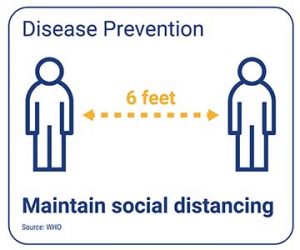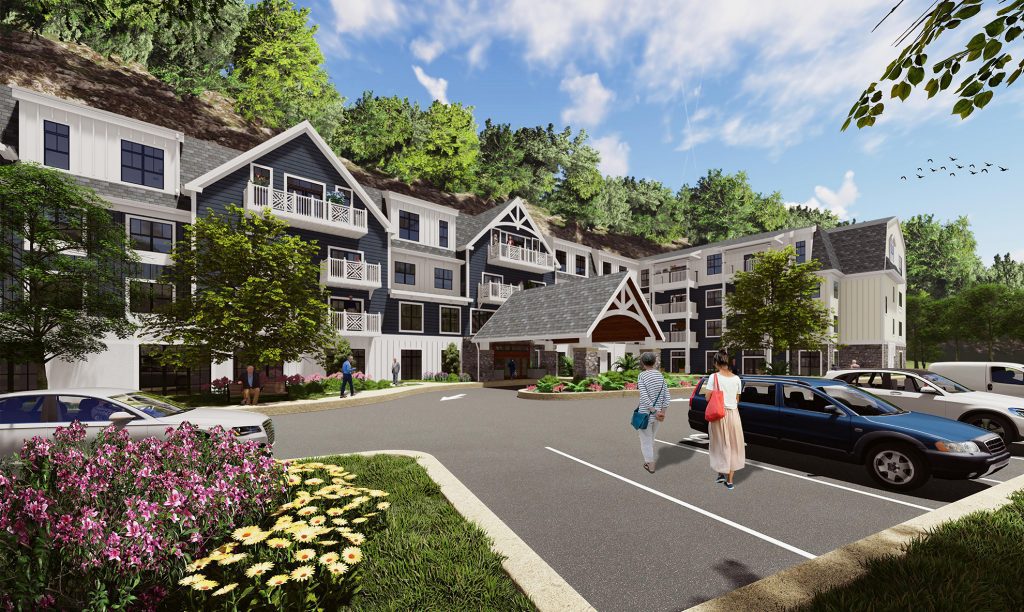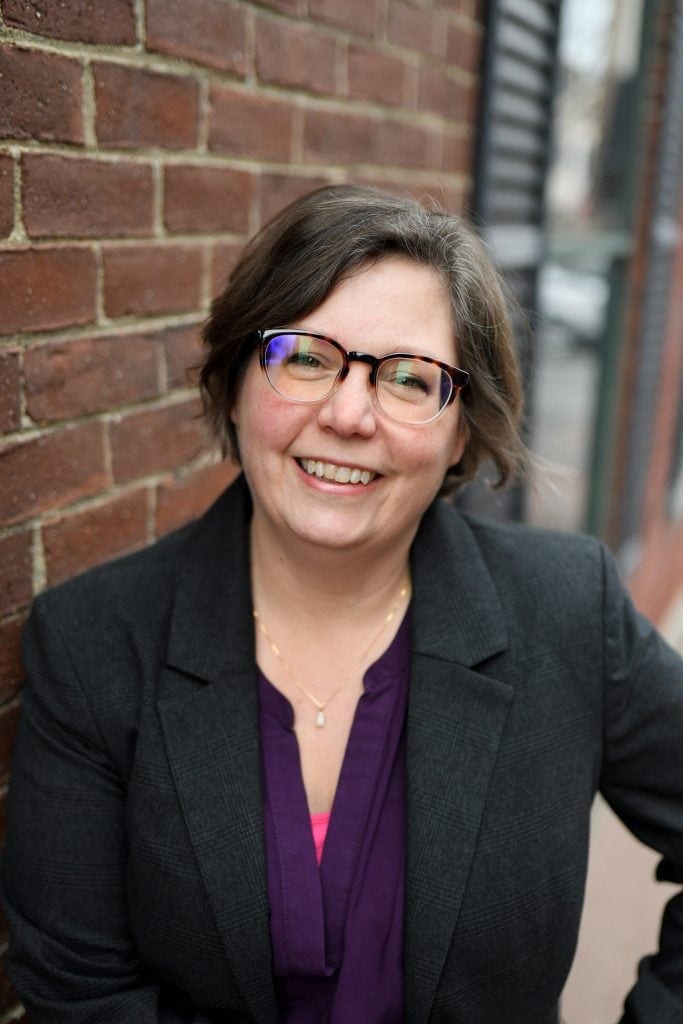Senior Living Design Practices: What Covid Has Taught Us.
by Christine Castaldo, AIA, Director of Housing, Market Square Architects
COVID Changed the Ways We Think About Senior Living Communities.
Covid-19 has thrown quite a curve ball for architects and interior designers in 2020. We have been challenged to improve environments under continuously updating new criteria. But what does that all mean for future permanent changes, especially in the senior living environment, which has been so heavily impacted?
Every senior living design conversation I have been part of these last few months has been about returning to normalcy. How do we allow some degree of socialization and still keep residents safe? The solution to that the puzzle has yet to be fully solved. But the last few months beg the question, how many of these Covid-19 practices should we incorporate as new a standard?
The CDC estimates that influenza was associated with more than 35.5 million illnesses, more than 16.5 million medical visits, 490,600 hospitalizations, and 34,200 deaths during the 2018–2019 influenza season1. They estimate that influenza caused 61,000 deaths the year before. Older adults accounted for 75% of influenza-associated deaths, highlighting that older adults are particularly vulnerable to severe outcomes resulting from an influenza virus infection. Influenza is with us every year and is a disease that we already have a vaccine for! It is true that the efficacy of the vaccine varies from year to year, some good, other years less so, but the CDC estimates that the vaccine reduces the risk of flu by 40-60%. So, once we do have a Covid-19 vaccine, should we expect the same?
If we can implement a few new practices universally, it is my belief will we start to see some improvement in both flu and Covid-19 statistics. Here are my top five:

Sanitize
Select finishes that can take the level of sanitization we have implemented for Covid-19. A clean surface is a healthy surface, so let’s make sure we are using materials that can easily be cleaned. The textile industry is quickly advancing their non-porous non-woven lines of fabrics that can be disinfected. These fabrics are textured to replicate traditional woven fabrics. Let’s also reduce the amount of carpet. This will help with influenza, Covid-19, and seasonal allergies.
Wipes should be provided for residents and visitors to help in the cleaning. Cleaning your own space gives an individual a sense of confidence and comfort and should be done both before and after using a surface.
Provide hand washing sinks. Washing hands is more effective than hand sanitizer. Consider providing two sinks where you would have one to encourage more hand washing and less waiting. Place them near dining rooms so they are convenient for used before and after eating.

Social distancing and one-way traffic
Implement a one-way traffic pattern for dining rooms and activity rooms with entry and exit doors. Yes, it is less social, but reducing unnecessary interactions is healthier for all.
Have multiple seating plans that allow for levels of distanced seating arrangements. When possible, also provide outdoor dining and extend that season with outdoor heaters. Schedule residents for an outdoor walking loop designed to keep walkers at least six feet apart. This may be just the nudge to encourage some residents to get outside and exercise. A healthy lifestyle is better for your immune system and will help fight off the unwanted bugs.

More fresh air, better filtration and ionization
Up the HVAC ante by providing more fresh air into the system for better air quality while recirculating less. Provide better filtration by designing systems or modifying existing systems so that they can utilize MERV 14 filters. MERV 14 filters are better at mitigating the transmission of infectious aerosols.
Bi-polar ionization is considered an emerging technology by the CDC in regards to virus control. Manufacturers have shown that ionization can increase filter effectiveness, and destroy bacteria and virus cells. New technologies will emerge as a result of Covid-19 and should be considered to keep spaces healthier.

Connect residents to nature and humans
Access to nature has proven to enhance quality of life. We now know that connection should extend to the resident’s rooms. We saw the benefit of those residents who had even the smallest of personal outdoor space. Those residents may have had a chance to visit with family members who were not allowed into the community. This is good for both physical and mental health. The emotional impacts of Covid-19 may never fully be understood, but humans are social creatures and the connection to both nature and other humans is good for mental fitness.

Technology
Visitation rules for seniors during the pandemic have been crippling. To help mitigate this, provide one click connection to family and friends via technology portals. Use wearables that can track resident physical activity and help predict when a resident is more likely to experience a fall. Engage in more telemedicine as virtual health care systems are on the rise. Many patients are visiting with doctors via video chat which keeps them out of the waiting rooms.
Utilize voice command PAs like Amazon’s Alexa and the Internet of Things (IoT), which can enhance or make simple everyday life. For residents with reduced sight or mobility issues, Alexa can connect a call, or tell you the weather, time of day or read the newspaper. With connected devices Alexa can turn the lights off and on, change the thermostat and lock the door.
2020 has been a difficult year for so many of us, unfortunately, there is no rewind button. We can’t start over and try again. What we can and should do, is learn from this experience, implement the items that have proven effective to prevent the spread of Covid-19 and embrace those tactics to fighting influenza and any other infectious disease that may be thrown our way.

About the Author
Christine Castaldo is an AIA Certified Architect and Director of Housing at Market Square Architects.
Favorite Quote: “There is an art to flying, or rather a knack. The knack lies in learning how to throw yourself at the ground and miss.” –Douglas Adams
Sources:
Estimated Influenza Illnesses, Medical visits, Hospitalizations, and Deaths in the United States — 2018–2019 influenza season https://www.cdc.gov/flu/about/burden/2018-2019.html#:~:text=vaccination%20uptake11.-,Conclusion,the%202018%E2%80%932019%20influenza%20season.
ASHRAE info: https://www.ashrae.org/file%20library/technical%20resources/covid-19/ashrae-building-readiness.pdf
